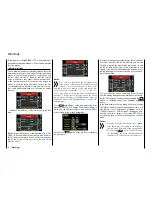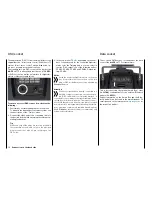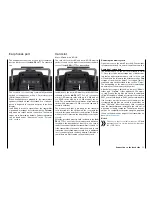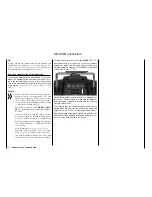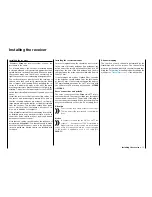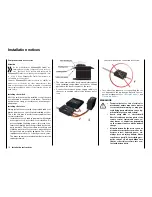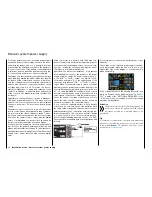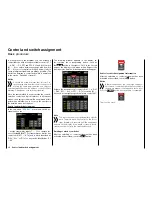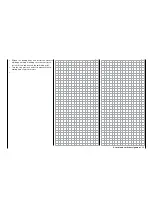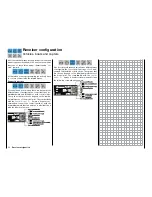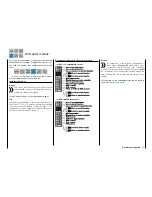
Lithium-ion (LiIo) and lithium polymer (LiPo) batteries
require special treatment. This is true when charging,
discharging, storing and all other types of handling.
Observe the following specifications:
Charging
Graupner
LiPo/LiIo batteries
• Since
Graupner|SJ
GmbH is unable to monitor
whether the batteries are correctly charged and
discharged, all warranties are voided upon incor-
rect charging or discharging.
• Only use the approved chargers with the associ-
ated charging cables to charge lithium ion/lithium
polymer batteries. Any alterations to the charger
and/or charging cables can cause serious dam-
age.
• The maximum charging capacity must be limited
to a factor of 1.05 of the battery capacity.
Example: 700
mAh battery = 735
mAh max.
charging capacity
• To charge and discharge lithium-ion/lithium poly-
mer batteries, only use the plug-in charger in the
set, or the specially designed charger/dischargers
by
Graupner
, see under
www.graupner.de
.
• Make sure that the number of cells, charging cut-
off and discharging cutoff voltage are set correctly.
Refer to the operating instructions of your charger/
discharger.
• Under these prerequisites,
Graupner
lithium-ion/
lithium polymer batteries can be charged with a
maximum 2 C (1 C corresponds to the cell capac-
ity) charging current. Starting at a maximum 4.2 V
per cell, continue charging at a constant 4.2 V per
cell until the charging current falls below 0.1... 0.2
A.
• Do not charge with more than 4.20 V per cell.
This would permanently damage the cell and may
cause a fire.
To keep from overcharging individual cells within
the pack, set the cutoff voltage to between 4.10...
4.15 V per cell in order to extend the battery life.
• The permissible temperature range for charging
and discharging lithium ion/lithium polymer batter-
ies is 0... +50°C.
• Batteries as well as individual cells are not toys
and must be kept from children. They must there-
fore be stored out of the reach of children.
• Keep batteries away from infants and small chil-
dren. If a battery is swallowed, immediately con-
sult a physician or go to an emergency room.
• Never place a battery in a microwave or under
pressure. This may cause smoke, fire or an ex-
plosion.
• Do not disassemble lithium ion/lithium polymer
batteries. Disassembling a battery can cause in-
ternal short-circuits. This can result in the release
of gas, fire and explosion, or other problems.
• The electrolyte and electrolyte vapors within lithi-
um-ion/lithium polymer batteries are hazardous to
health. Avoid direct contact with electrolytes. If the
electrolyte comes into contact with your skin, eyes
or other body parts, use a large amount of fresh
water for rinsing and then consult a doctor.
• Before each use, make sure that the batteries are
in a satisfactory condition. Defective or damaged
cells or batteries may not be used.
• Cells and batteries may only be used in accor-
dance with the technical specifications for the spe-
cific cell type.
• Batteries and cells may not be heated, burned,
short-circuited or charged with excessive current
or with reversed polarity.
Safety and handling instructions
for lithium-ion (LiIo) and lithium polymer (LiPo) rechargeable batteries
• If handled improperly, there is a danger of fire, ex-
plosion, irritation and burns. To extinguish a fire,
use a fire extinguishing blanket, CO2 extinguisher
or sand.
• If the batteries overheat, proceed as follows:
Disconnect the battery, and place it on a non-flam-
mable surface (such as concrete) until it cools
down. Never hold the battery in your hand due to
the risk of explosion.
• Batteries from parallel-connected cells, and com-
binations of old and new cells, cells of different
makes, sizes, capacities, manufacturers, brands
or type may not be used.
• Batteries which have been installed in a device
should always be removed when the device is
not being used. Always turn devices off after you
have finished using them to prevent battery drain-
age. Dead lithium-ion/lithium polymer batteries are
considered defective and may not be reused.
• Be sure to charge the batteries in a timely manner.
While they are being charged, the batteries must
be placed on a non-flammable, heat-resistant and
non-conductive surface. Combustible or highly
flammable objects are to be kept away from the
charging area.
• Batteries must be monitored while they are being
charged. The maximum charging current specified
for the respective cell type may not be exceeded.
• You may only charge a pack of series-connected
lithium-ion/lithium polymer batteries all at once as
long as the voltage of the individual cells does not
deviate by more than 0.05 V, or if the differences in
voltage are monitored and equalized by a balanc-
er connection using a balancer or equalizer during
charging.
22
Safety and handling instructions for lithium-ion/lithium polymer batteries
Summary of Contents for mz-24 PRO
Page 13: ...13 Personal notes...
Page 19: ...19 Personal notes...
Page 37: ...37 Personal notes...
Page 59: ...Touch 59 Base menu Model selection...
Page 79: ...79 Personal notes...
Page 89: ...89 Personal notes...
Page 115: ...115 Personal notes...
Page 153: ...Helicopter model function menus Common function menus 153 Personal notes...
Page 169: ...169 Personal notes...
Page 187: ...187 Personal notes...
Page 199: ...199 Personal notes...
Page 207: ...Fixed wing model function menus System menus 207 Personal notes...
Page 211: ...211 Personal notes...
Page 219: ...219 Personal notes...
Page 237: ...237 Personal notes...
Page 238: ...238 Personal notes...
Page 239: ...239 Personal notes...

